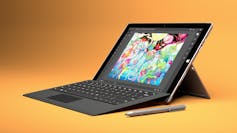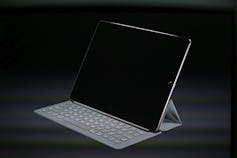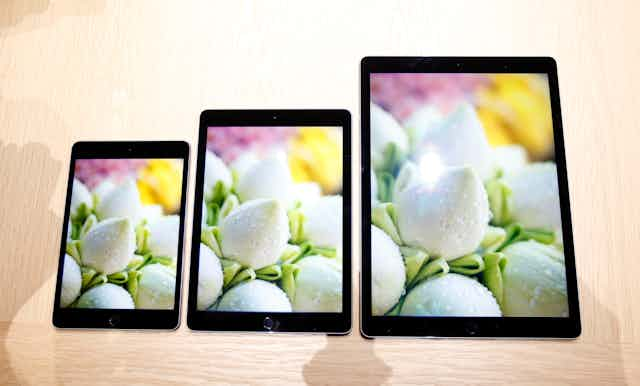Apple’s annual September keynote as usual brings hardware changes, software updates and the occasional surprise.
Rumours of a larger iPad Pro were proved true: the significantly larger 12.9 inch iPad with upgraded ARM A9X processor and faster graphics and internal components is being sold as a device on which desktop-class applications could run.
This is supported with a stylus and keyboard (sold separately in typical Apple fashion) that essentially converts the iPad Pro into a laptop. The stylus, dubbed Apple Pencil, has provoked comment as Steve Jobs had expressed his distaste for them in the past. The Pencil features hand writing recognition software, and improvements to iOS finally allow multitasking by splitting the screen between two apps.
However, with prices starting at an eye-watering US$799, there will be many who think that this won’t light a fire under tablet sales, which have been flat. For example, Amazon has taken the opposite approach, aiming for the bottom end of the market with a US$50 tablet subsidised by purchases made through Amazon’s services.
There may be iPad sales in education, and in retail where they are often used as point of sale devices, but in business the iPad faces considerable competition. For example, the iPad Pro bears an uncanny similarity to Microsoft’s own convertible tablet/laptop device, the Surface Pro, in cost and size and style. But the big difference is that Surface comes with a full operating system, Windows 10: few will take Apple’s claims that the iPad Pro can run desktop-class applications for professional use while it’s running the stripped-down iOS operating system originally designed for phones, instead of the full OS X as found on Macbooks and iMacs.


A surprise was the appearance of Microsoft staff on stage to demonstrate Microsoft Office apps running on the iPad – something greeted with a stunned silence in the auditorium. Microsoft Office has been updated to support the stylus, and the invitation to appear at such a high-profile Apple event shows the extent to which Microsoft has been pouring money and effort into ensuring its software suites are cross-platform, rather than tied to Microsoft Windows. Another visitor to the stage was Adobe, whose reps showed off new design tools with the stylus – which all suggests an outbreak of corporate peace between the firms.
Pushing Apple TV into the home
The Apple TV finally gets a long-awaited upgrade, a wait during which many competing devices have appeared such as NOW TV, Roku, or Google’s Chromecast. Originally classified as a “media extender”, Steve Jobs called the Apple TV a “hobby” when introduced in 2007, but with this update Apple has refreshed the device, reorienting it to support the app ecosystem that has thrived elsewhere.
The new Apple TV features a new operating system tvOS, making use of the extensive iPhone/iPad developer tools and software already available. Boasting a much higher hardware specification, the Apple TV now runs apps and games, provides a new interface and a touch-enabled remote that can also process audio commands through the Siri digital assistant voice recognition system. With this a user can use their voice to search for content across multiple television networks.
It should be easy to port existing iPad/iPhone applications to the TV, bringing an unparalleled range of services compared to the competition. The surge in streaming services from Amazon and Netflix has sidelined Apple to some extent, so it will be interesting to see whether reorienting the device around apps will increase Apple’s footprint in this space. Sony and Microsoft should be worried that the massive back catalogue of iOS games can now be used in the living room through Apple TV. Prices start from US$149, available from October.
Phone and Watch
An update to the Watch, dubbed WatchOS2, arrives later this month and features updated accessories, colours and straps. The update will give apps direct access to the hardware, allowing developers to write full native applications for that are more independent of the iPhone, to which the Watch has so far played second fiddle.
The iPhone 6S and iPhone 6SPlus are unchanged externally, but Apple claims internal upgrades including a 12 megapixel capable camera, faster A9 processor and a Force Touch capable screen, which responds to varying degrees of pressure. This is still a new tech, for which capable software has yet to be written.
Finally, as signalled in the developer conference earlier in the year, owners of older devices will get access to new features when iOS 9 is launched very soon. An incremental upgrade, nevertheless it offers features many users have been calling for and will provide a significant increase in speed and features for older devices.
It’s unlikely these changes will lead to the extraordinary sales achieved with the larger iPhones last year, so it may provide an opportunity for other manufacturers to play catch-up – improving their hardware and services which Apple has always claimed is what differentiates them from the competition in a crowded market.

